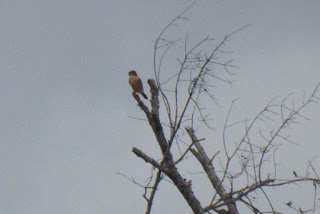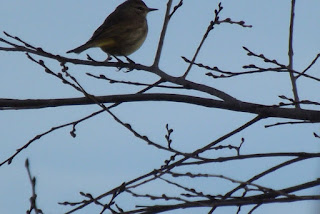 |
| American Coots (Lake Fayetteville, Arkansas, November 27, 2014) |
The Christmas Bird Count is one of the longest-running wildlife censuses. The period of December 14, 2017 through January 5, 2018 marks the 118th time that the count has been conducted. Like many birdwatchers, I’ve already participated in my local CBC this year. Some hardworking people will even be involved with more than one count. The count circles, of which there are several per state or province, measure 15 miles in diameter, and each count compiler assigns portions of the count area to the various groups or individuals to cover. The rules for counting are fairly simple: all observed, identified wild birds should be included in the tally, and the same area cannot be surveyed more than once.
 |
| American Kestrel seen on Noxubee NWR CBC, December 17, 2016 |
 |
| One of the most common songbirds seen in the winter months in North America: the White-throated Sparrow. (Fayetteville, Arkansas) |
Considering how simple the CBC really is, how valuable could its results be to ornithology? In some cases, more valuable than one might think. For example, Niven et al. (2004) used CBC data to examine population changes in the bird species that breed in the boreal forests of Canada and Alaska and winter farther south. Some of these boreal species, such as Merlins and Palm Warblers, showed population increases. Populations of several other species were relatively stable, while some species, including Harris’s Sparrows, Rusty Blackbirds, and Northern Shrikes, had declined significantly. The researchers noticed that the CBC winter population trends paralleled those in the data from the Breeding Bird Survey, another long-running bird census.
 |
| Merlin at Choctaw Lake, MS, December 31, 2015. |
 |
| A rare (for the region) Palm Warbler seen on Noxubee NWR CBC, December 16, 2017. |
References:
Caffrey, C. and Peterson, C. C. 2003. Christmas Bird Count data suggest West Nile Virus may not be a conservation issue in the northeastern United States. American Birds 57:14-21.
Link, W. A., Sauer, J. R., and Niven, D. K. 2006. A hierarchical model for regional analysis of population change using Christmas Bird Count data, with application to the American Black Duck. The Condor 108:13-24.
National Audubon Society, Christmas Bird Count Compiler Resources. Retrieved December 30, 2017, from http://www.audubon.org/christmas-bird-count-compiler-resources.
Niven, D. K., Sauer, J. R., Butcher, G. S., and Link, W. A. 2004. Christmas Bird Count provides insights into population change in land birds that breed in the boreal forest. American Birds 58:10-20.
Weidensaul, S. 2007. Of a Feather. Harcourt, Inc., Orlando, Florida, USA.












